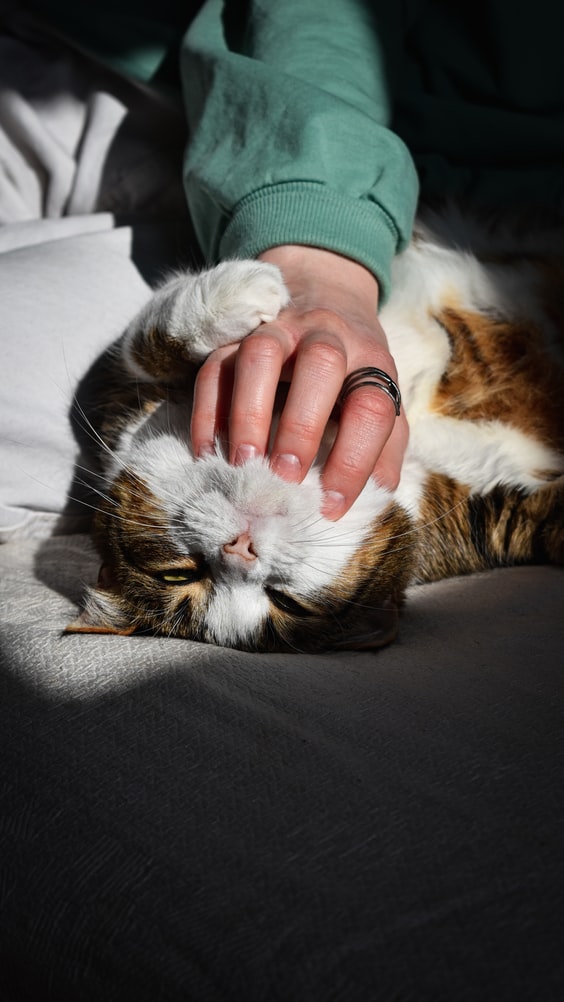Your Pets & Their Pain
Is Your Pet Showing Signs Of Pain?
Pets are notoriously known for hiding their pain and discomfort. While they feel and process pain similarly to humans, hiding pain is an evolutionary behaviour that was once necessary to protect themselves from predators during times of illness. The question then becomes – what are the signs your pet is in pain?
Without a voice, it can be difficult for pet owners to tell when their companion is not feeling themselves. Some symptoms of sickness are more evident, such as bloody stool, seizures, or severe weight loss, while others are so subtle that they go missed by their human counterpart.
Fortunately, with a good understanding of your pet’s personality and a keen eye to spot subtle symptoms, you can quickly spot the signs your pet is in pain and act on them accordingly.

How Can I Tell If My Pet Is In Pain?
There are two types of signs that your pet is in pain: general behavior and on touch or examination. Despite some of the more evident symptoms of acute pain, some pain symptoms might be subtle and difficult to identify. There are a variety of signs that our pet is in distress, ranging from shaking, decreased activity levels, and a change in disposition to licking, weeping, and excessive panting.
We must pay close attention to our pet’s everyday activities as pet owners and report any changes to our veterinarian.
Lethargy & Decreased Activity
Much like when we feel sick, when your pet experiences pain, they tend to decrease their level of activity and their zest for life is lost. Often if a pet is in pain, they will also display aggressive behaviour. Even the most docile dog may snap and growl when in pain.
Decreased Appetite
A toothache, persistent mouth discomfort, or dental illness is frequently the cause of a decrease or complete loss in appetite. This is a rather noticeable difference in behaviour, and if left untreated can be extremely dangerous.
While not an emergency, if your pet has not eaten or had water for more than 24, you should contact your vet immediately to make sure that there is no serious underlying issue.


Mobility Issues
Stiffness, difficulty getting up and limping are some of the more obvious signs your pet is in pain. This is often the result of injury, sore paws and ever arthritis.
A sore pet may be reluctant to walk upstairs or is noticeable slow when getting up. Pain can also be manifested in a decreased interest in exercising and playing.
Grooming & Appearance
When an animal is hurt, their first instinct is to clean and care for the wound. Excessive grooming and localised licking can be a sign of pain, irritation and discomfort. While cuts are more obvious, localised pain can also be internal, making it more difficult to detect.
Panting & Vocalisation
In dogs, panting is normal. However, excessive panting when they have not been exercising is a warning sign. Shallow breathing may also be an indicator that it is painful to take a breath.
Some pets who are experiencing pain may be vocal. However, if this is not paired with physical action, it may not be immediately spotted. Excessive whining, yelping, growling and hissing, when paired with other symptoms may be a sign that they are in pain.
Shaking & Trembling
Shaking and trembling should not always be seen as your pet getting cold, or getting old. Both can be seen as a sign of pain, or even a more serious condition such as poisoning, pancreatitis or kidney disease.
Chocolate, mouldy compost or the sugar-free sweetener “xylitol” can often cause severe muscular tremors in dogs.

Managing Your Pet's Pain
Whether your pet’s discomfort is the result of an accident or a chronic condition, there are several options for managing their pain. In addition to ensuring that your pet is comfortable, helping to manage your pets pain aids in the recovery process of surgery and injury.
Where possible, and with the help of a veterinarian, the direct cause of the pain should be addressed depending on the type of pain, how long it has been present and any other health issues they may be experiencing.
If your pet is showing signs of pain during play and physical activity, avoid it until you can talk to your veterinarian, as they are able to help you figure out how to best help your pet. This may include stopping the activity altogether until they are feeling better or, for chronic cases, modifying their exercise to minimise their pain.
Simple modifications include shortening walks, using ramps, throwing their ball shorter distances and raising food and water bowls to a more comfortable height.
With the advice from your vet, there are simple things you can do at home to help keep your pet comfortable and to monitor their pain level.
- Massages to help with bonding and identifying any unusual bumps, scrapes and bruises.
- Manage their play and exercise
- Ensure they receive a well-balanced diet
- Lots of love and attention

Every Pet Is Different
It is important to remember that every pet is unique and will display pain and discomfort in a number of ways. Depending on the pet and their circumstances, each pets body and pain experiences will be different. Where one pet is very vocal in their pet, another will suffer silently.
The best way to decipher if your pet is in pain is to always monitor your companion for any signs and symptoms and track their behaviour for any changes. Early prevention is key to reduce the pain and suffering of your beloved pet.
If your pet is experiencing worrying signs of pain, set an appointment with your vet to discuss your concerns. For more information on pet pain and identifying signs of discomfort, get in touch today.

